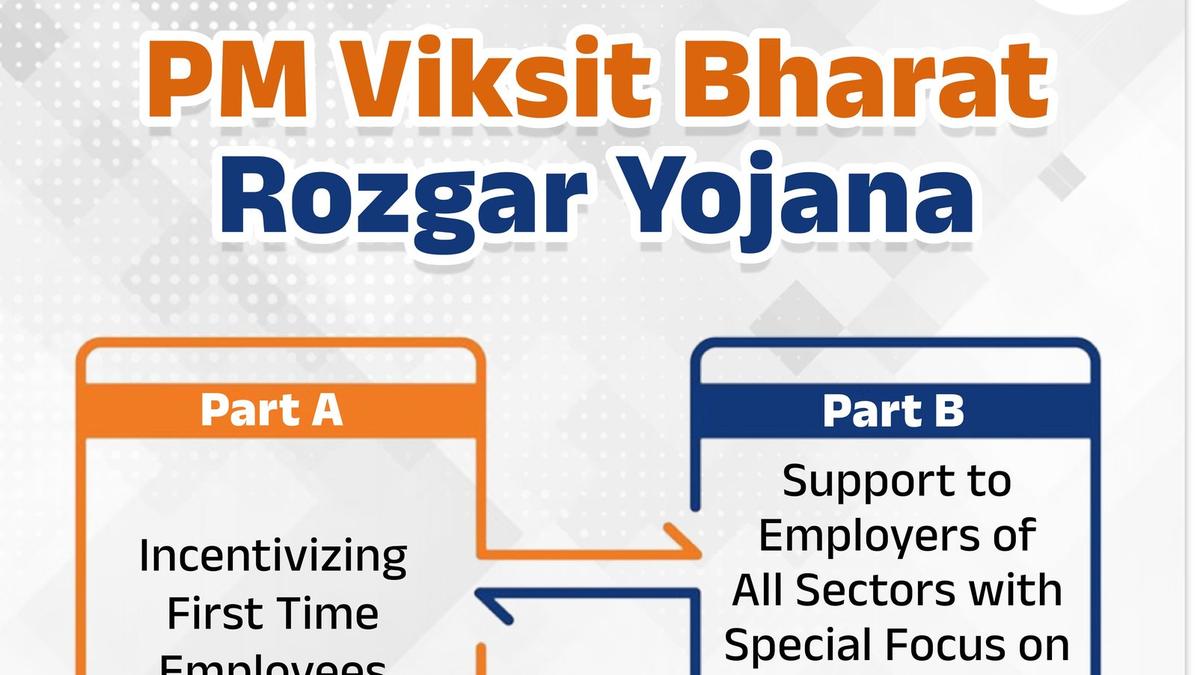India’s growth story has always been written by its Shram Shakti, or labour power. There has been a remarkable arc in India’s economic progress over the past 11 years, under Prime Minister Narendra Modi’s leadership. India has risen from the world’s 10th largest economy in 2014 to the fourth largest today. It has carved out an enviable niche for itself in the global arena, and the strength of its human resource has had no small role to play in this journey.
Fueling this success story is the fact that India’s economic growth has been accompanied by an unprecedented expansion of employment. According to RBI-KLEMS, while only 2.9 crore jobs were created between 2004-2014, over 17 crore jobs were created in the decade that followed. Formalisation has also accelerated, as EPFO data shows.
Social security coverage
The real transformation, however, has been in social security coverage. In 2015, only 19% of Indians were covered under at least one social protection scheme. By 2025, that number has surged to 64.3%, reaching 94 crore beneficiaries, making India the second-largest social security system in the world. The International Labour Organization has acknowledged this achievement as one of the fastest expansions of coverage globally.
As we look ahead, it is clear that the future of the nation will be decided not only by the pace of GDP growth, but also by the quality of jobs we create, the security we extend to workers, and the opportunities we provide to our youth. Against a global backdrop of rising automation, uncertainties induced by Artificial Intelligence, supply-chain shifts, and other vulnerabilities shaping jobs worldwide, India stands at a demographic inflection point.
Of India’s population, about 65% is under 35 years of age, constituting a critical demographic dividend that gives our economy an edge as countries in the West reflect ageing populations. For years, India’s demographic dividend — its Yuva Shakti — has been cited as its greatest strength. Yet, this potential remained underutilised. As we strive towards the vision of a Viksit Bharat by 2047, the task before us is clear: we must shift from ‘possibility’ to ‘prosperity’.
Employment, in this backdrop, is no longer just an economic indicator; it is the foundation of dignity, equality and national strength. It demands that we make our youth employable, integrate them into the formal economy, equip them with financial literacy, and ensure that they are protected by a robust social security net. Only then can our demographic advantage truly translate into a lasting national dividend.
An ambitious programme
It is to address this challenge, and to bridge any gap between aspiration and opportunity, that the government has launched the Pradhan Mantri Viksit Bharat Rozgar Yojana. Initially put forth in the Union Budget 2024-25. and announced by the Prime Minister in his 12th Independence Day address, it represents a significant break from the past in both scale and design. With an outlay of ₹1 lakh crore, this is the most ambitious programme in India’s history, expected to create over 3.5 crore jobs over two years.
What sets this scheme apart is its architecture. Unlike earlier programmes supporting employment generation, this scheme addresses the dual challenge of youth employability and enterprise competitiveness simultaneously. By offering direct financial incentives to both first-time employees under Part A (up to ₹15,000 in two instalments) and employers under Part B (up to ₹3,000 per new hire per month), it lowers entry barriers for workers while reducing hiring risks for businesses.
Equally important is the scheme’s explicit push towards formalisation and social security integration. Benefits will be channelled through Direct Benefit Transfer, ensuring transparency and linking new workers to social security systems from day one. The scheme is thus a structural nudge towards a formal, secure and productive labour market. Further, the added focus on incentives to employers in the manufacturing sector is a further propellant towards making Bharat aatmanirbhar (self-reliant).
The Pradhan Mantri Viksit Bharat Rozgar Yojana signals a shift from scheme-based interventions towards a comprehensive employment ecosystem. It builds on the learnings of earlier initiatives, such as the Production-Linked Incentive, the National Manufacturing Mission, and Make in India, and recognises the changing nature of work in a competitive global set-up.
By supporting workers and employers, the scheme recognises that job creation is a shared responsibility. As India seeks to become a global manufacturing hub while embracing digital innovation, the scheme ensures that no one is left behind. Even the smallest enterprise and the newest entrant to the workforce are integrated into the journey of national development.
A new India
This scheme is more than a policy announcement. This initiative is a concrete step towards converting demographic dividend into public prosperity. It is part of the foundation towards realisation of the vision of Viksit Bharat, where every youth has access to meaningful work, every work has dignity, and every youth gets the opportunity to realise his or her dreams. Employment is, in its truest sense, nation-building. With this initiative, the Modi government reaffirms its commitment that no aspiration will remain unsupported, and no youth will remain without opportunity.
Mansukh Mandaviya, Union Minister of Labour and Employment and Youth Affairs and Sports, Government of India
Published – September 01, 2025 01:18 am IST

